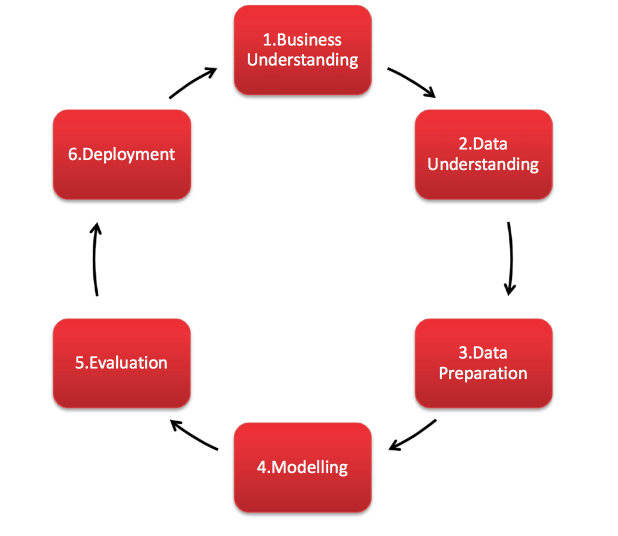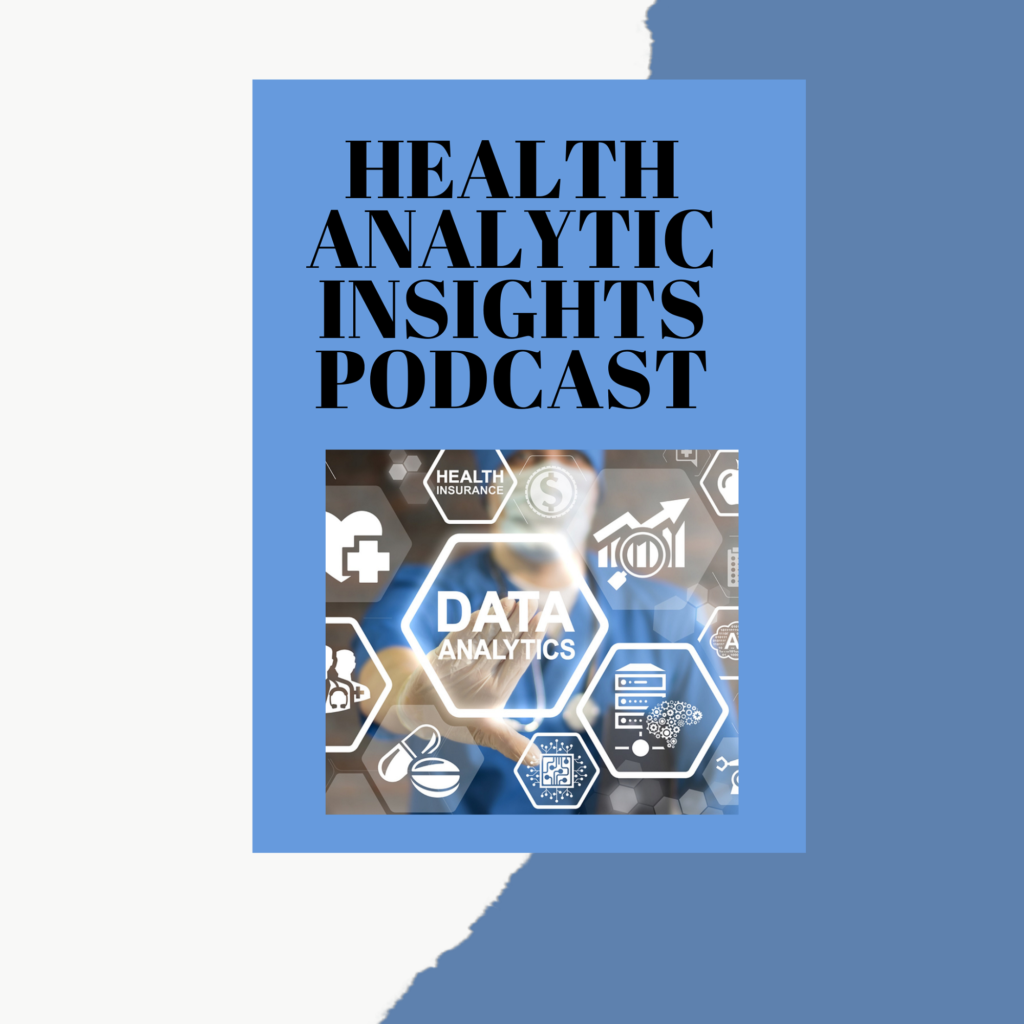It is NOT easy to get that first job when trying to obtain your first job out of school or switching from a different field. In this blog post I am going to go through the steps of creating a clinical business intelligence portfolio when applying for jobs in the health informatics or healthcare analytics space.
Why should you build a clinical business intelligence portfolio?
Well if you are looking to enter the field but you have only clinical or technical experience or if you have neither, a portfolio could be an effective way to get your foot in the door of an entry level position, if you don’t have any experience or a network.
There are many ways to build up experience if you would like to transition consider framing your business intelligence portfolio based on the Cross-industry standard process for data mining, known as CRISP-DM.
This methodology has several steps when it comes to designing a data project. Let’s say you want to design a business intelligence product which could help hospitals lower hospital readmission rates (or you could investigate publicized problems of the clinical organization you are interviewing with).
The first step in your BI portfolio would be to understand both the clinical and data issues associated with readmission rates. For instance, in Canada readmissions to hospital cost more than $2.1 billion a year in Canada
Ask yourself what are some clinical processes that might be leading to these high readmission rates? Could it stem from misdiagnosis of the initial condition? Do patients have knowledge and access to proper medical services and early intervention?
When it comes to the data issues you could ask yourself what anonymized and de-identified data do I have access to, to solve this problem? What are my data sources? Can I look at EMR/EHR records or should I use open source data and report on trends from this data? How clean is my data and what missing values are present?
The next stage of the CRISP-DM model is data preparation and this is the one stage that is estimated to take the majority of a data analyst’s time. Oftentimes when we are in school or taking online courses the data we have access to is squeaky clean but this often is not the case in the workplace and employers might want to know if you have experience working with messy data and what was your approach?
Therefore, I would definitely make the most of this stage and learn some tricks that you can use to deal with dates which are formatted incorrectly, or tables which have to be pivoted or unpivoted and the multitude of other issues that arise when trying to manipulate your data into a format that can be properly analyzed.
You can use many different tools to practice data manipulation from Excel, Power BI, SQL etc… all these tools have similar concepts when it comes to data preparation. Also, if we want to make certain statements about the data we have to carry out statistical testing to ensure our statements are supported. If we want the data tool we build to essentially say a causes b (i.e. In our hospital, one of the main causes of hospital readmission rates is a lack of patient education and therefore, we need to carry out education programs) we have to make sure we have analyzed the data and done the proper hypothesis tests and have included confidence intervals to ensure our audience or management understands how accurate our results are when taking action.
The next step in the CRISP-DM model is the modeling stage and this is the stage that is often coined the most interesting part of the model which people might want to skip to but it’s important to spend quite a majority of your time in the data preparation stage.
Data modeling can consist of using R or Python to build machine learning models to create a classifier which can predict which patients might be at risk for readmission so clinical intervention can take place. Modeling can also fall under data visualization, thus a dashboard in Power BI, Tableau, Qlik etc.. can be built to display the overall short and long term trends of patient readmissions so clinicians and management can see how the hospital is performing overtime and suggest solutions.
Looking to jump start your career in Health Informatics? Get the FREE guide to getting your FIRST job in Health Informatics
The last two stages of the CRISP-DM method include evaluation and deployment of the business intelligence tool. It is important to receive feedback and criticism from people who will be working with the tool on a day to day basis and not just from the IT or Business Intelligence team building the tool. There will be a need for training of the tool so it does not become a burden for those who now have to integrate this tool into their job.
In addition, including people’s feedback whether this is in the form of a focus group allows for clinical buy-in and can help raise the likelihood of people enforcing the use of the tool so the data that is input into the tool is consistently high caliber.
If you have clinical experience you will have a unique understanding of the problems within your organization and an important understanding of clinical terms. If you have technical experience you will have a unique understanding of how long it takes to build a technical tool (especially the data preparation stage) and how to carry out a project from start to finish with an understanding of which key stakeholders need to be involved.
If you have neither skillset, creating your own clinical project with the CRISP-DM methodology might be a good place to start. If you have no experience at all and are looking to break into the field and learn more about the field of health informatics and healthcare analytics consider volunteering at a hospital you are interested in, volunteering for a hack-a-thon with a clinical focus, volunteering for the Healthcare Information and Management Systems Society in your area and building up your network, applying to a Kaggle competition and in my own opinion, which I think is most valuable, get experience in another field which can provide you with transferable skills so you can eventually end up in the industry of your dreams!
I grew my network considerably by attending a hack-a-thon focused on solving healthcare problems. This hack-a-thon took place over several days and involved workshops on intellectual privacy when building apps and presentations from clinicians who were working in the field and were able to identify problems that were happening real-time within their organization. This gave me an inside perspective as someone who had not worked full-time in a hospital and I was able to make connections with a variety of people and grow my network in a field where I would eventually find work in.
Although it is NOT easy to find a role in health informatics for many if you have no clinical or technical experience I hope this blog post has sparked some ideas you can act on to improve your chances of finding a job in this field. Finally, building a clinical focused business intelligence portfolio and integrating this into your resume through a GitHub account might help employers show you have what it takes. Good luck on your search!
Please comment below on how you got your first job in the field of Health Informatics.
Check out the Health Analytic Insights Podcast for more of this content and have a wonderful holiday season!

3 Comments
How Do I Start A Career in Health Informatics? - HealthAnalyticInsights · January 18, 2021 at 11:58 am
[…] into the field of health informatics is NOT easy. You can read my blog posts here and here for some additional tips. With entry-level roles, you will not be expected […]
Future In-Demand Jobs in Health Informatics - HealthAnalyticInsights · June 21, 2021 at 10:39 am
[…] problem. This blog post details how to build your own clinical business intelligence portfolio here. Data Engineers You can’t have medical data scientists without data engineers to build the […]
4 Tips to Transition into a Health Informatics Role - HealthAnalyticInsights · July 19, 2021 at 11:14 am
[…] tools for your own personal projects (e.g. a clinical business intelligence portfolio, more on that here). In addition, once you develop connections with individuals in IT or the Clinical Decision Support […]